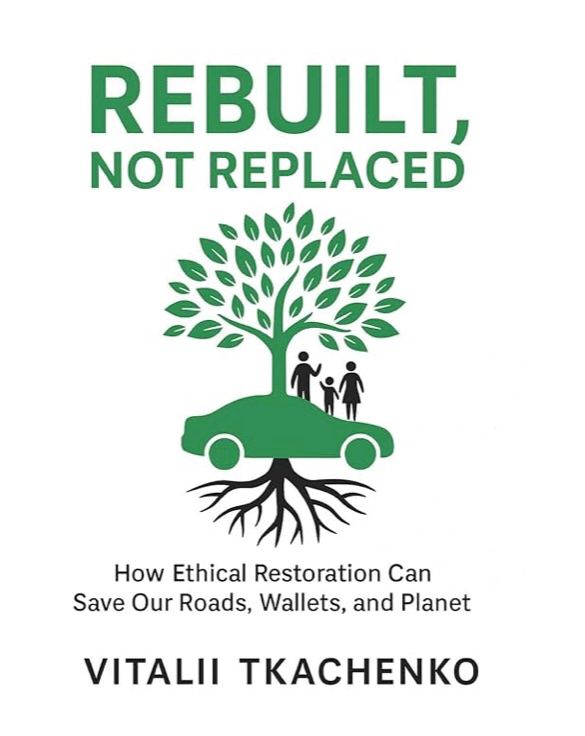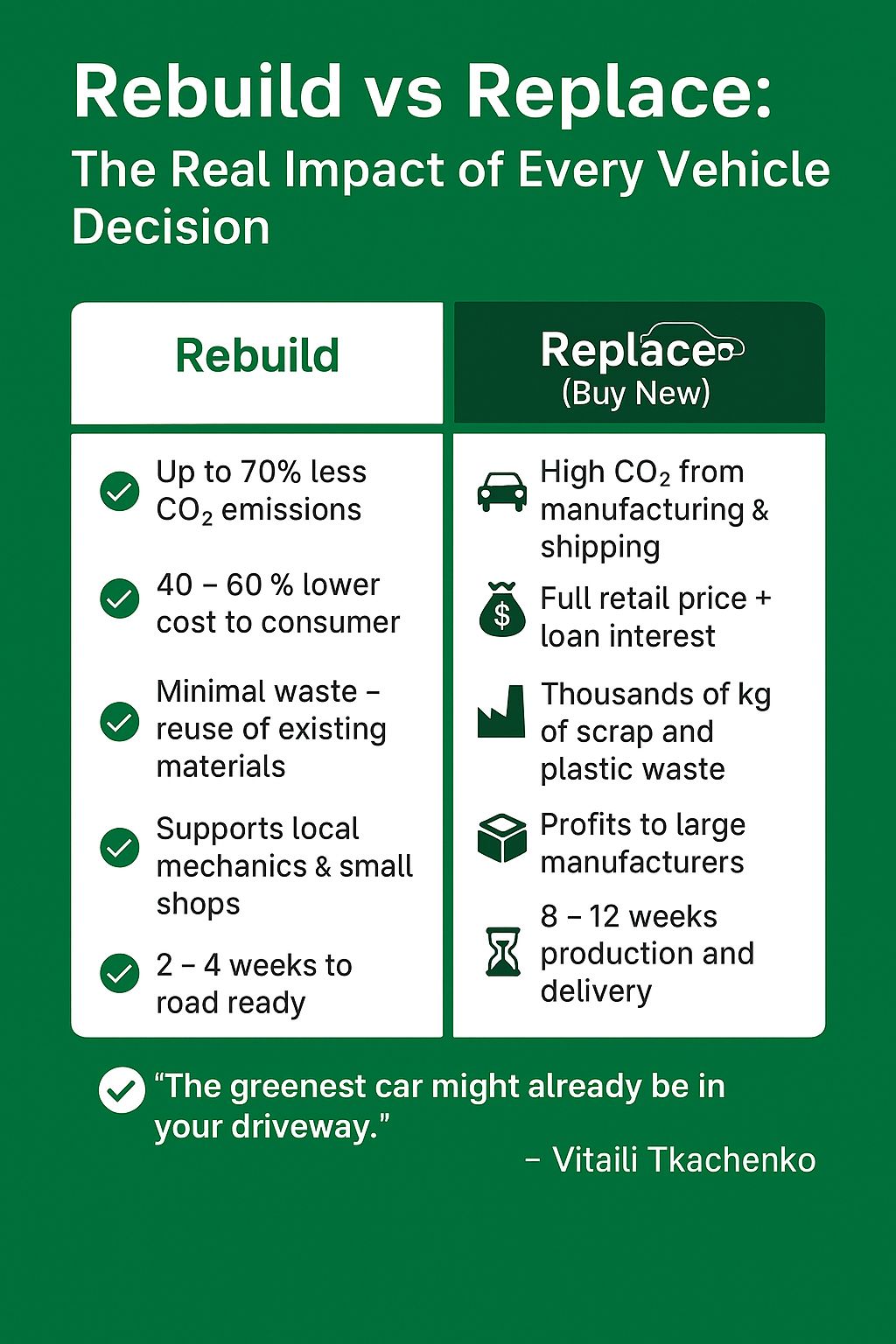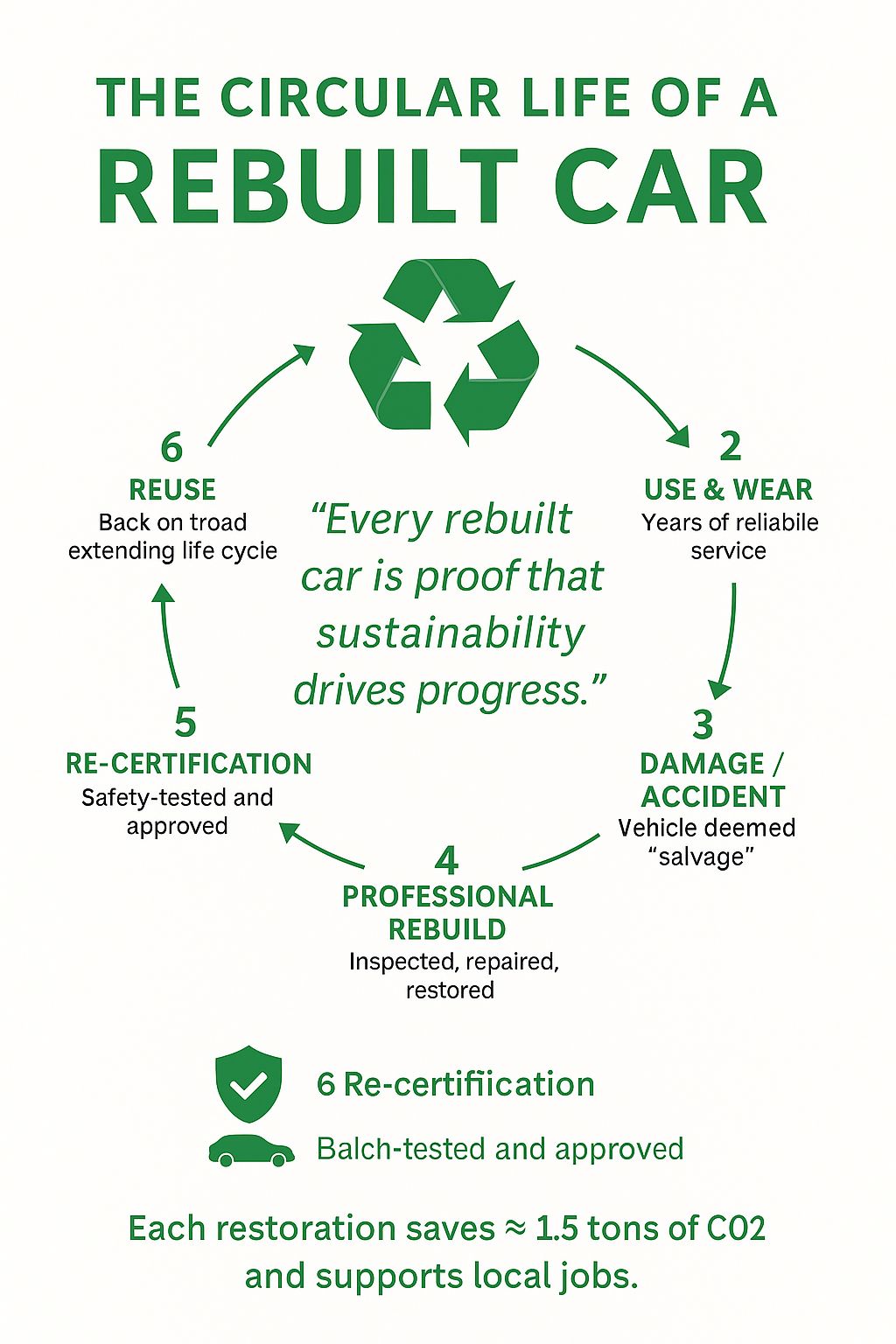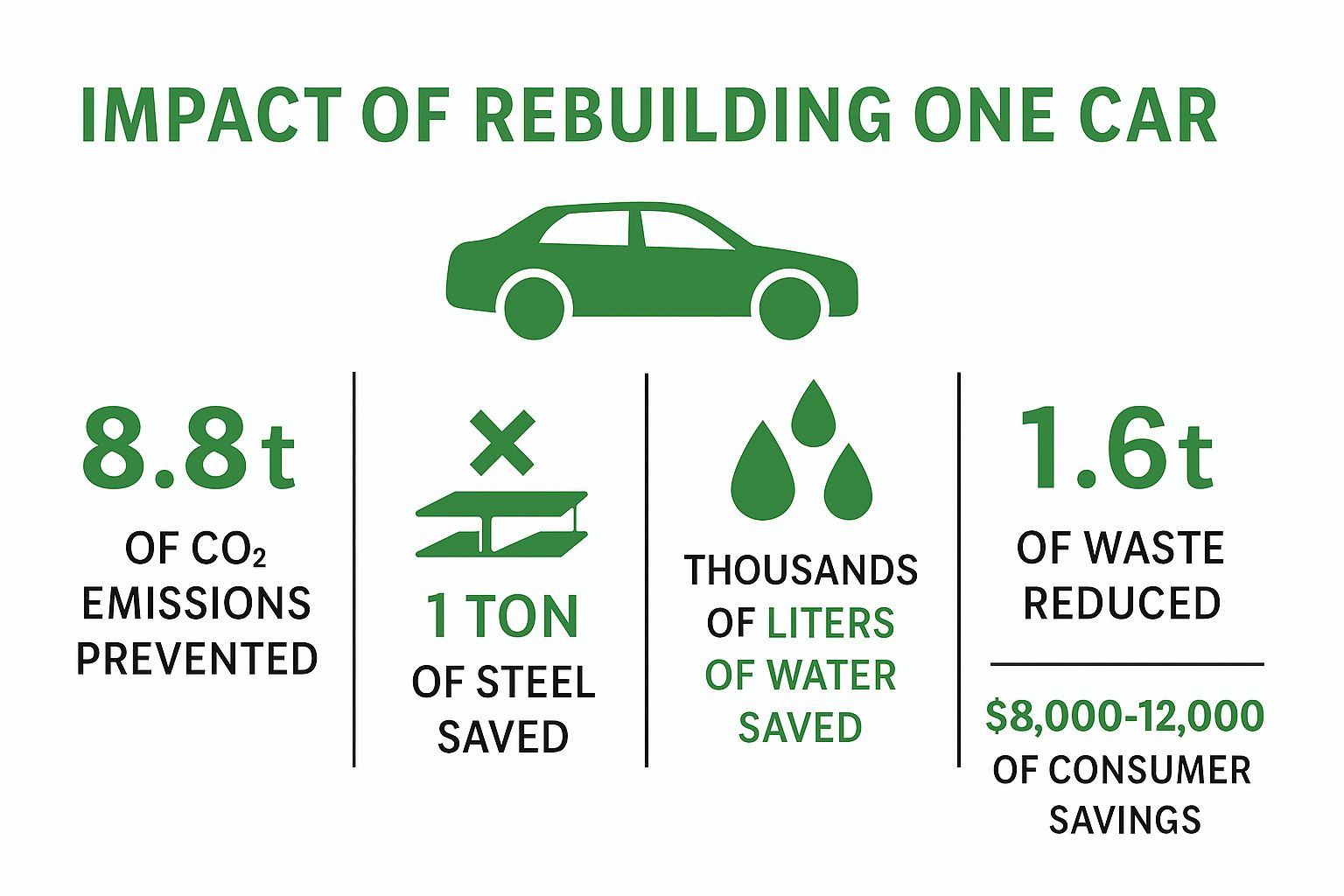
Rebuilt, Not Replaced
Rebuilt, Not Replaced: How Ethical Restoration Can Save Our Roads, Wallets, and Planet
Originally published on Medium.
By Vitalii Tkachenko
Licensed Automotive Engineer | Founder of The Guaranteed Best Choice | NIADA & FIADA Member
For decades, consumers have been told that progress comes from buying something new.
In the automotive world, that message has been repeated so many times that it’s become unquestioned truth. But what if the real innovation — the one that benefits both people and the planet — lies not in replacement, but in restoration?
My new book, Rebuilt, Not Replaced: How Ethical Restoration Can Save Our Roads, Wallets, and Planet, challenges that mindset and opens a conversation about the future of sustainable mobility, local industry, and ethical rebuilding.
Now available on Amazon, this work represents more than a decade of research, engineering, and advocacy for smarter automotive choices.
Why I Wrote This Book
As an engineer and small-business owner working with rebuilt vehicles in the U.S., I’ve seen two realities collide. On one side are families searching for safe, affordable cars. On the other are thousands of vehicles discarded every year — vehicles that could have been restored, reused, and kept on the road for a fraction of the cost and environmental impact.
The stigma around rebuilt cars is one of the biggest misconceptions in the automotive world. These vehicles are not unsafe; they are the proof of second chances — for machines, for families, and for the planet.
Writing this book wasn’t just a professional goal. It was a mission to educate and to advocate for a more ethical and sustainable approach to mobility.
 The Hidden Power of Rebuilding
The Hidden Power of Rebuilding
When a car is restored correctly, its environmental footprint can be up to 70% lower than manufacturing a new vehicle. Rebuilding saves materials, reduces landfill waste, and keeps craftsmanship alive.
Every rebuilt car represents:
Less pollution from manufacturing and shipping,
More affordability for working families, and
Support for small American businesses — local repair shops, mechanics, and independent dealers.
Rebuilding isn’t just about cars. It’s about our values — repairing what still has life instead of discarding it for convenience.
 A Movement, Not Just a Message
A Movement, Not Just a Message
Over the years, people across the country have asked me to share this message publicly — to help shift how we think about vehicles, ownership, and sustainability. Rebuilt, Not Replaced is my answer to that call.
This book explores real stories from the field, practical repair standards, and the social and economic impact of restoration. It shows that when done right, rebuilding is a bridge between innovation and preservation — between environmental responsibility and everyday practicality.
Why It Matters Now
At a time when every industry is being forced to rethink waste, rebuilding cars isn’t just a niche idea. It’s an essential step toward a circular economy, where value isn’t measured by how new something is, but by how long it can serve its purpose.
This is about giving people knowledge and confidence — understanding that sustainability can start in your own driveway.
The Myth of “New Equals Better”
The global auto market produces over 90 million new vehicles each year, but at what cost?
Each new car requires massive energy, metals, water, and shipping. At the same time, millions of cars that could be safely rebuilt are written off and scrapped. This cycle of constant production and disposal doesn’t just waste resources — it undermines local repair shops, independent dealers, and consumers who can’t afford skyrocketing prices.
Buying new has become a habit — but rebuilding is an act of awareness.
When we rebuild, we extend the life of materials that already exist. We invest in skills, not factories; communities, not corporations. We keep craftsmanship alive.
♻️ Rebuilding: The True Circular Economy

Every car has a story — from its first manufacturing day to years of faithful service. But when damage occurs, the story doesn’t have to end. A rebuilt vehicle undergoes a professional inspection, repair, and safety recertification before returning to the road.
This cycle — Manufacture → Use → Damage → Rebuild → Reuse — forms the essence of the circular economy. It keeps resources in motion instead of letting them die as waste.
“Every rebuilt car is proof that sustainability drives progress.”
Each professionally restored vehicle can save approximately 1.5 tons of CO₂, thousands of liters of water, and hundreds of kilograms of materials. Beyond environmental savings, rebuilding creates local jobs, strengthens small repair businesses, and empowers families with affordable, reliable transportation.
🌿 The Environmental Equation

Let’s look at the numbers. Every time a car is rebuilt instead of replaced:
We prevent up to 8,800 kg of CO₂ emissions.
We save 1 ton of steel and thousands of liters of water.
We reduce waste by over 1,600 kg.
We save consumers $8,000–$12,000 on average compared to buying new.
Multiply that impact by the millions of vehicles that could be restored every year — and the results are transformative. This isn’t just about cars; it’s about the kind of economy we want to build.
An economy that repairs, reuses, and respects what already exists.
Rebuilt Cars: Safer, Smarter, Sustainable
A properly rebuilt car isn’t a compromise — it’s often stronger and safer than when it left the factory. Modern rebuilds follow strict state inspections and safety certifications, often using higher-grade replacement components and advanced testing tools.
In Rebuilt, Not Replaced, I share real-world examples from across the United States — from flood-damaged vehicles fully restored to better-than-new condition, to cars rebuilt for veterans and low-income families.
When we see rebuilding as an upgrade rather than a downgrade, we unlock a path toward sustainability that benefits everyone — consumers, mechanics, dealers, and our shared planet.
A Challenge to Industry and Policy Makers
The auto industry’s obsession with “new” is not sustainable. It’s time for federal recognition of rebuilt vehicles as a legitimate, environmentally responsible part of the U.S. automotive ecosystem.
Programs supporting ethical restoration could dramatically reduce national carbon output while providing affordable mobility options.
Government agencies and trade associations (like NIADA and FIADA) have a chance to lead — by promoting clear rebuild standards, tax incentives for restoration, and educational campaigns that highlight the safety and environmental benefits of rebuilt vehicles.
“The future of mobility isn’t about replacing what’s old — it’s about restoring what still has value.”
A Thank-You to the Community
To everyone who has supported this journey — from fellow engineers and mechanics to families who trusted rebuilt vehicles — thank you. This book belongs as much to you as it does to me. Together, we can redefine what “new” means and prove that rebuilding is not a compromise — it’s a commitment.
Rebuilt, Not Replaced: How Ethical Restoration Can Save Our Roads, Wallets, and Planet
Now available on Amazon.
About the Author
Vitalii Tkachenko is an automotive engineer, entrepreneur, and sustainability advocate. As founder of The Guaranteed Best Choice Inc. and a member of the National Independent Automobile Dealers Association (NIADA), he champions ethical rebuilding, transparency, and affordable mobility for working families.
#Sustainability #Automotive #RebuiltNotReplaced #GreenEconomy #EthicalRestoration #Innovation #SmallBusiness
disscuss